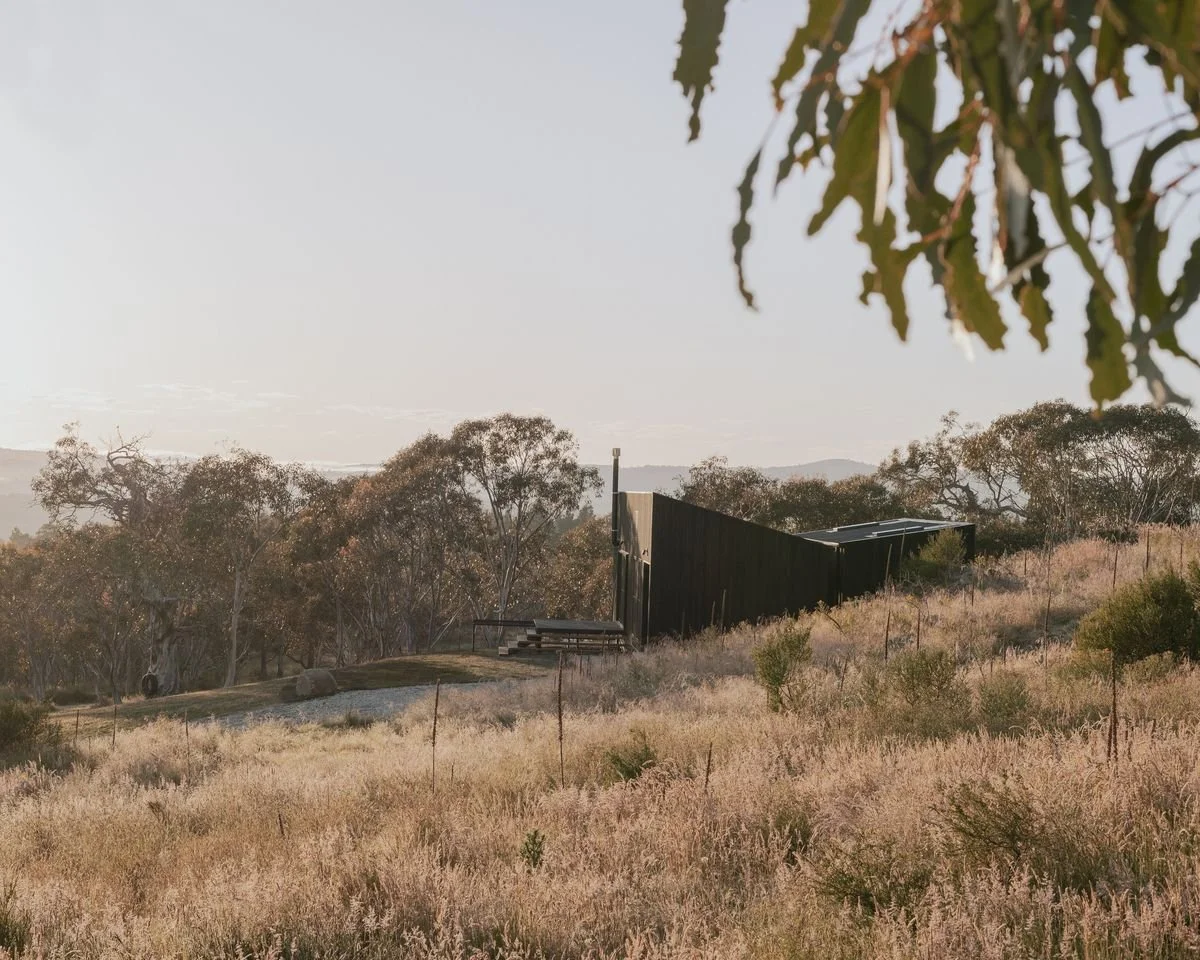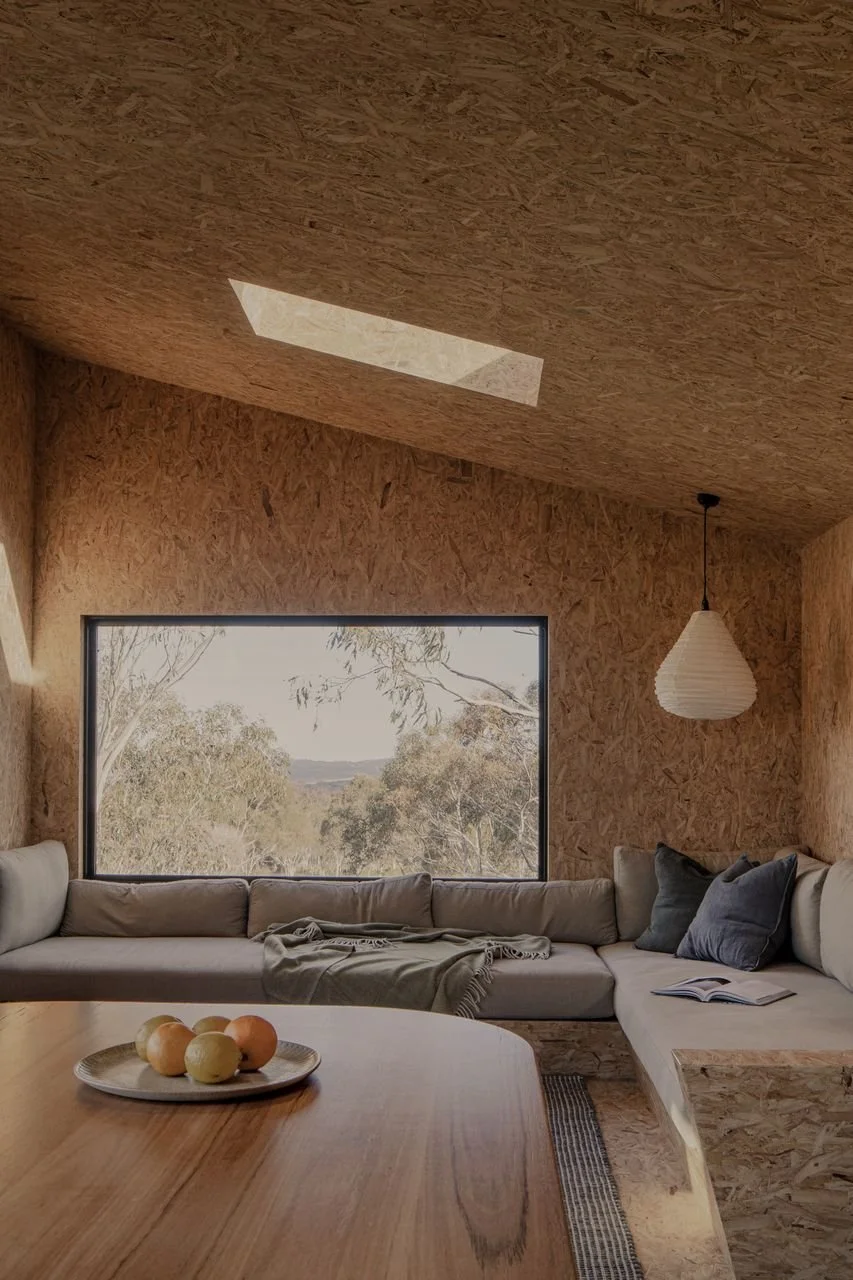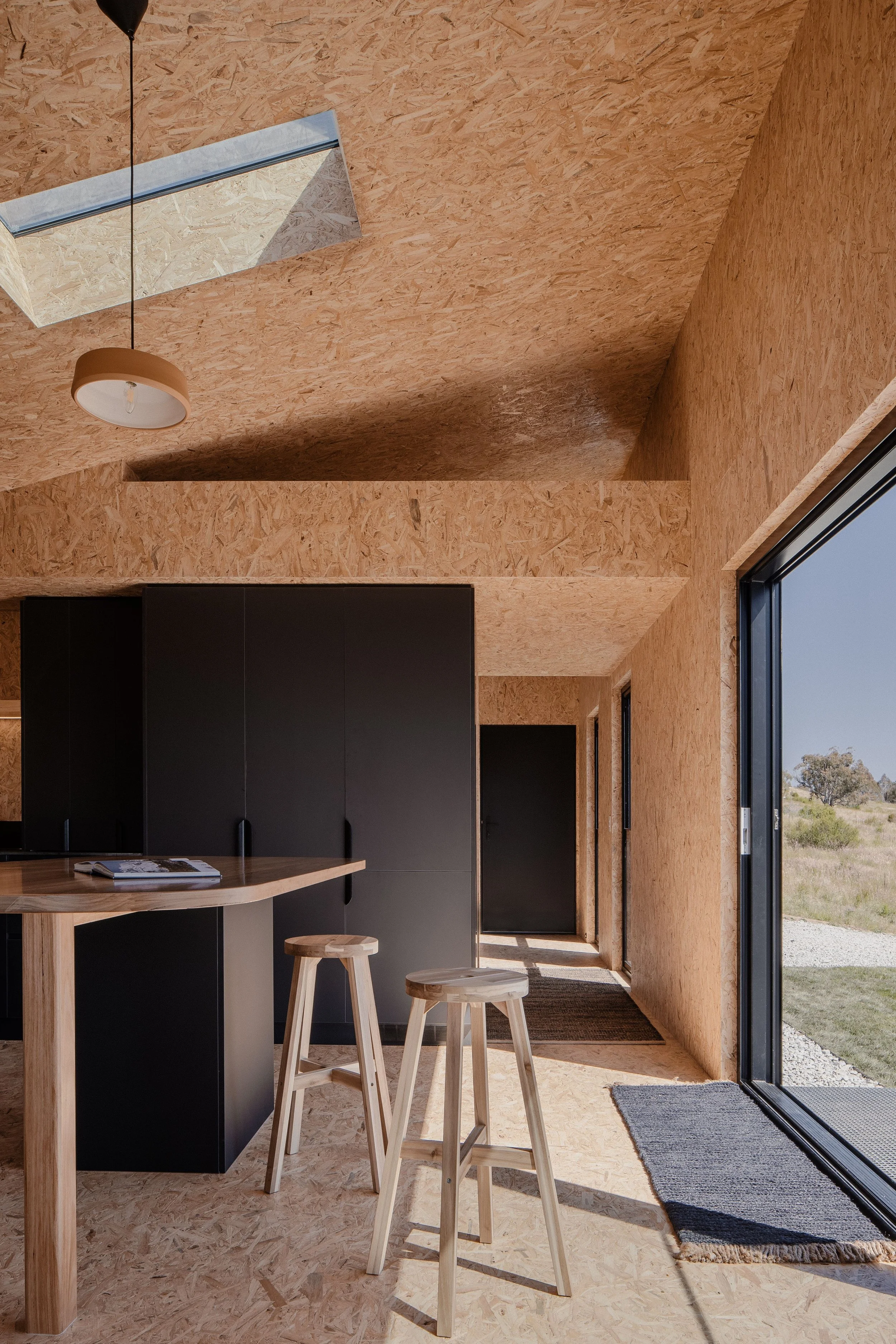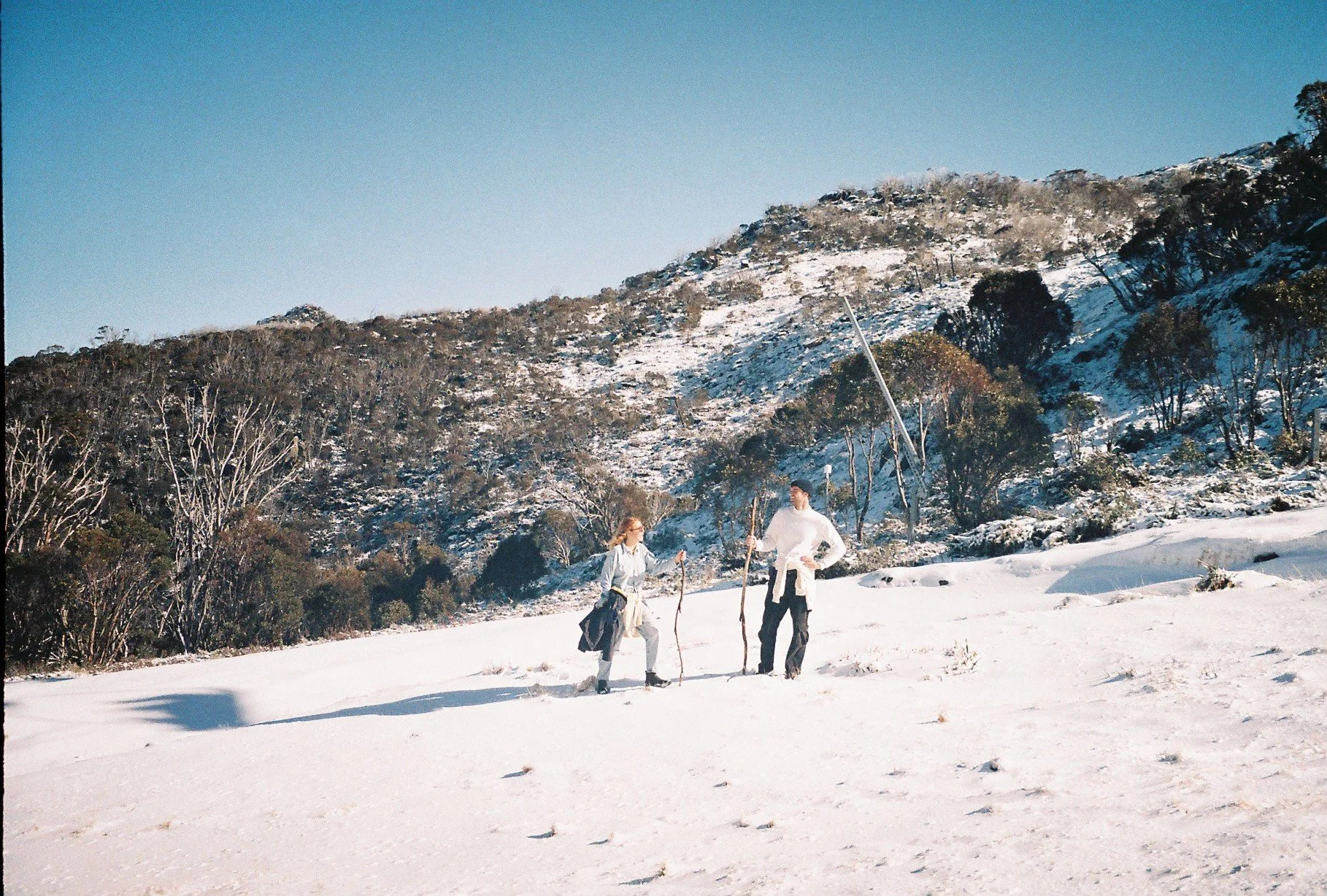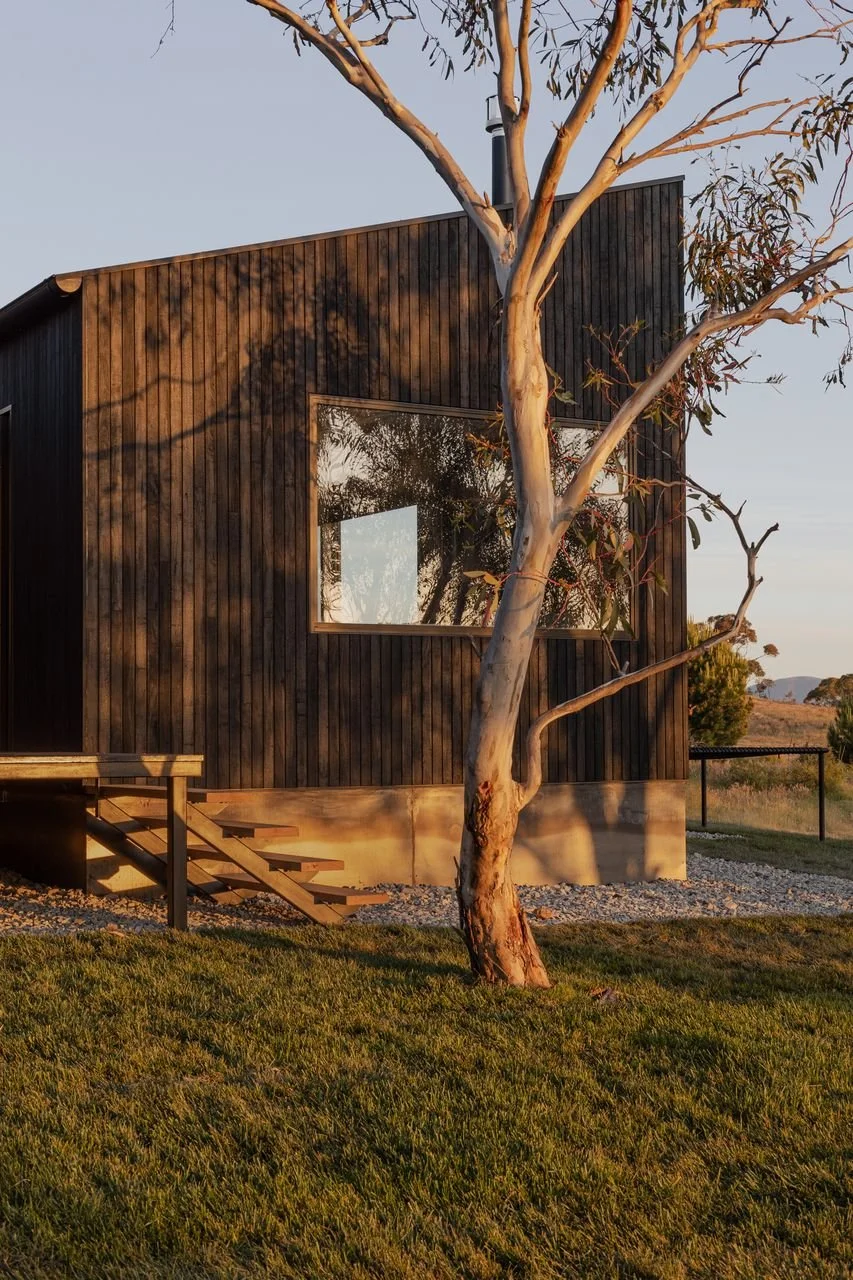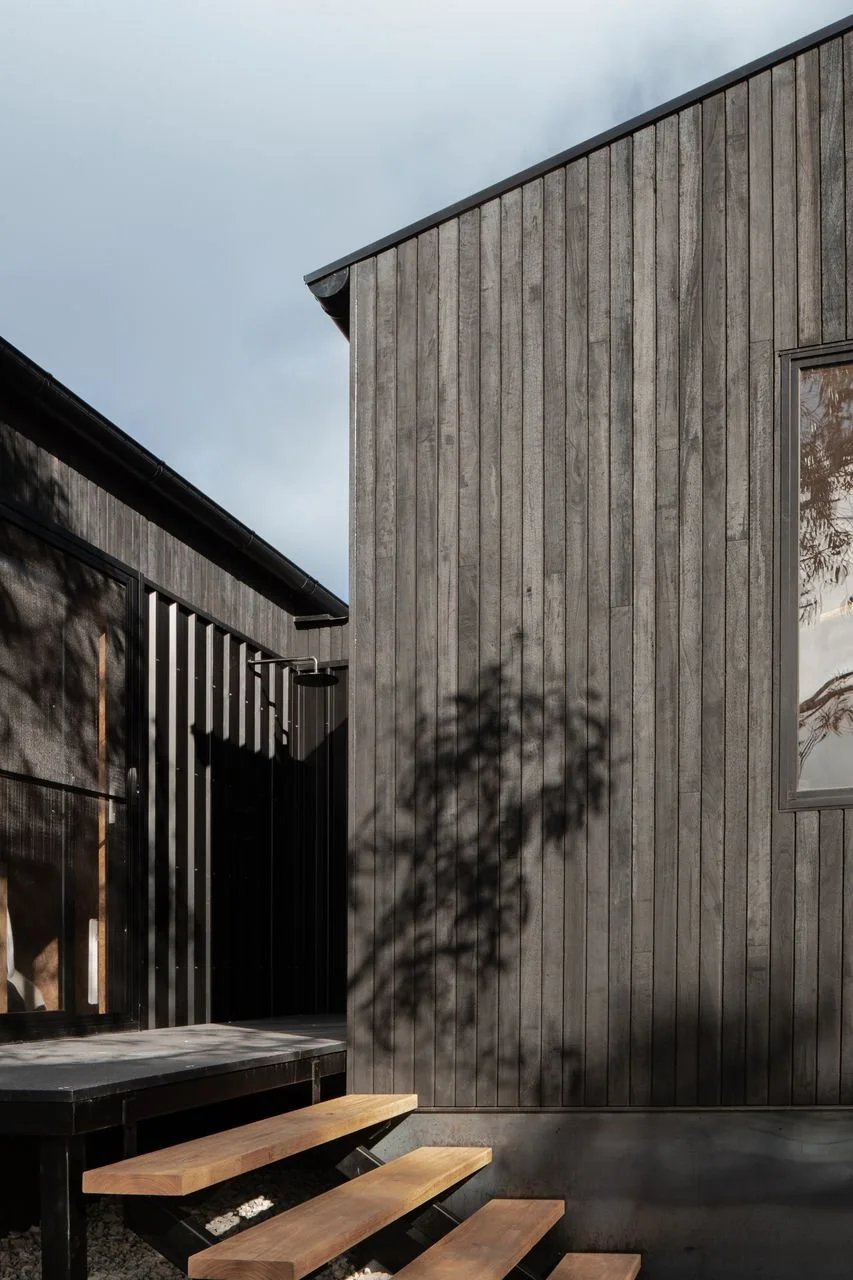Common Kosci - Where Land is Living Room
STORY: Winnie Stubbs IMAGES: Tim Clark
Suspended in the hills behind Jindabyne, on an eighty acre property dotted with snow gums and wallabies, sits Common Kosci – a timber clad cabin that’s become so much more than the passion project it was born as. Architecturally designed to celebrate the natural landscape, Common Kosci reflects the desire within all of us to connect to our surroundings. We visited for two magical nights as autumn turned to winter in the Snowy Mountains.
It was midnight when we arrived at Common Kosci; the air was laced with ice and the moon hung in an amber arc above the mountains. Three Shetland ponies welcomed us on the dirt road that led into the property – adorable, surreal creatures that emerged out of the darkness like obscure guardian angels blessing our arrival. The building itself was camouflaged against the
night, but immediately we were struck by its beauty: a sculpture that was at once welcoming and intimidating, suspended in the stillness of the night. From the muted glow of the moonlight we could gather just enough about our setting: bushland stretched out in every direction, and gently sloping mountains nudged their silhouettes into a circuit board of stars.
Inside, we poured cups of tea and pulled from the shelf a hand drawn map of the property.
Common Kosci – the architecturally-striking cabin we were calling home for the weekend – is situated on an 80 acre property in the hills behind Jindabyne. It’s just a five minute drive from town, but in a location that feels entirely remote.
“When we were younger and would be partying in town, the journey back always seemed to take forever. Now though, it feels perfect,” explains Sarah Brown, who owns Common Kosci with her husband Aaron. Aaron grew up holidaying on the neighbouring property, and the pair decided to build the cabin in 2022, when the world was emerging from lockdown and the importance of connecting with nature – and each other - had never been more apparent.
The name Common Kosci refers to ‘the common us’: the idea that the core of our humanity is something universal. That, when placed in a space that grounds us, we can rediscover the beauty of just being, of “rest and play”.
Sarah and Aaron chose the particular location on the property due to its uninterrupted views, with Sarah insisting that “it’s the land that’s on showcase, the cabin is secondary to everything around it”. The concept of ‘land as living room’ was the guiding inspiration for Alan Powell – a friend of the Browns’ and the architect responsible for Common Kosci’s design.
Powell’s mission was to create a space that would connect its inhabitants to the world around them, and his success is undeniable. There’s a heart-slowing magic to the feeling of flow that comes from time spent in nature – the sense of perplexingly enlivening calm induced by mountain air and a direct connection to the ever evolving landscape around you. At Common Kosci, that magic is pervasive. So much so, that when the cabin was being built, Sarah would arrive on site to find a carpenter practising yoga on the site.
“Without sounding cliche, there’s just something about the space that makes you slow down,” Sarah reflects.
The next morning, the sun rose just before we did – chasing the stars from the sky and bathing it in a soft pastel pink. It appeared behind the mountain on the east; a deep apricot orb that pushed up behind the trees and sent shafts of gold through the windows. Shadows of gum leaves danced on the walls, and through the picture box window that dominates one side of the cabin, a family of kangaroos settled down for a rest. The whole scene felt impossible: an Australiana dream playing out beyond the glass and chipboard walls of this tastefully minimalist, Scandi-inspired space. The cabin itself is ergonomic to the core, but not without exceptional beauty: with hand built furniture that balances function, form and a sophisticated sense of purpose.
“It’s a space that’s designed for families: that welcomes adventures and the chaos of kids without ever feeling chaotic itself,” Sarah explains.
The exterior is formed of burnt black jarrah from Western Australia, with a deck that folds out onto sloping hillside: garden limits indiscernible and irrelevant. Inside, walls are clad in stylish chipboard that seems both playful and refined, and large windows flood the cabin with light from every direction.
“We wanted to bring the outside in,” Sarah shares.
We could have stayed all morning – watching the world play out through the windows, or from the hammock that hangs between the trees.
Breakfast was calling though, so we took the short drive into Jindabyne and chose a cafe from the list of suggestions that Sarah had sent. After breakfast we walked through the town to the top of the hill where two kids were selling banana bread from a roadside stall, and the op shop – which opens for four hour increments twice a week – was doing a roaring trade in second hand skis and vintage jackets. Held in the bowl of the Snowy Mountains, Jindabyne feels like a fantasy ski town from decades gone by – where the air is clearer and every feature just a tiny bit more beautiful: uncorrupted.
The glittering peaks that surrounded the town held the promise of snow, so we drove to Thredbo and spent the day climbing a mountain – right to its sparkling summit. We drank hot chocolates and threw snowballs and every second seemed to adhere by-the-book to the Common Koski ethos: connecting to nature for rest and play.
By the time we arrived back at the cabin, the sun had begun to drop behind the hills and the deep blue of the day was fading from the sky. We gathered firewood from the land around the house and I bought a blanket and my book onto the net beyond the deck while my friend lit the fire and the sky turned to peach.
“When we were designing the cabin, we asked ourselves: who do we picture here? It was created for families like ours, but it’s evolved into a place that seems to appeal to everyone,” Sarah said.
We shared a cheese board by the fire and roasted marshmallows from the stash of “essentials” in the Common Kosci pantry before dinner. Once the sun had set, we went inside and ate pizza from a restaurant that Sarah had recommended.
The next morning, the promise of winter had kissed the hills with a light frost that sparkled in the morning sun. Deer were grazing on the hill beyond the hammock and a family of ducks pecked at the grass. We cooked toasties on the fire below the deck and prepared to say goodbye to our mountain home.
On the journey back to Sydney we attempted to choose a highlight from the weekend, but struggled to isolate one.
The comment I found on the welcome letter from Sarah and Aaron seemed to sum up our reflections perfectly: “We hope you leave Common Kosci feeling grounded and more connected to nature and one another”.
If you’re interested in seeing more of our work - we hope you’ll consider subscribing to our physical paper here.
